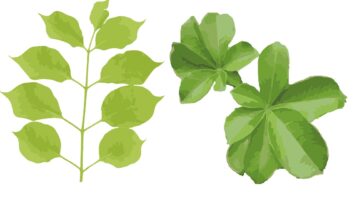Publications
A. Adefila, A. Cheikhyoussef, K. Egbadzor, R. Isomäki, J. Lepetu & A. Saarto (eds), 2025. Baobab & Marula: New Solutions to Global Warming and Food Security. Into Pubishing. https://into-books.com/book/baobab-marula-new-solutions-to-global-warming-and-food-security
J. Lepetu, M. Rampart, I. Kopong, G. Rammotokara & T. Makoi, 2025. Consultancy for the Assessment of Marula in the Northen Parts of Botswana. Ministry of Local Government and Traditional Affairs of Botswana.
K. F. Egbadzor, 2025. Weak Root Systems Causing Old Baobab (Adansonia digitata L.) Trees to Fall. Journal of Diversity Studies 4(1). https://doi.org/10.51470/JOD.2025.4.1.49
T. Lämsä & H. Rouhiainen, 2025. Kenttäkurssi Botswanassa haastoi ajattelua ja synnytti aitoja kohtaamisia. [A field course in Botswana challenged one’s thinking and created genuine encounters]. Ympäristökasvatus-lehti [Environmental Education Journal]. https://feesuomi.fi/lehti/kenttakurssi-botswanassa-haastoi-ajattelua-ja-synnytti-aitoja-kohtaamisia/
A. Pratiwi, S. Huttunen, A. Ndeinoma, K. Lisao, E. Ndeunyema, N. Amuthenu, A. Haufiku & V. Myllynpää, 2025. Community-driven tree planting in Northern Namibia : Determinants and challenges. The Frontier in Sustainable Agromaritime and Environmental Development Conference 171. https://doi.org/10.1051/bioconf/202517104013
K. F. Egbadzor, R. Sam & J. Gakpo, 2025. Germplasm collection and ex situ conservation of Adansonia digitata in Ghana. Biodiversity 26(2):1-7. https://doi.org/10.1080/14888386.2024.2442580
J. Lepetu, H. Garekae, G. Rammotokara & T.I. Makoi, 2025. Contribution of Non-timber Forest Products to the Livelihood of Marginalised Communities Around the Okavango Delta, Northern Botswana. In: Hambira, W.L., Abdeta, A.A., Moalafhi, D.B., Muposhi, V.K., Mosepele, K. (eds) Environmental Change and Biodiversity Conservation in sub-Saharan Africa. Advances in Global Change Research, vol 75. Springer, Cham. https://doi.org/10.1007/978-3-031-73136-5_19
G. Horlu, K. F. Egbadzor, E. Afetorgbor & A. Akumah, 2024. Perception of urine diverting dry toilet and baobab cultivation in Adaklu District of Ghana. Sustainable Environment 10(1). https://doi.org/10.1080/27658511.2024.2391630
L. Luukkonen, 2024. Paikallisyhteisöjen ja alkuperäistiedon merkitys kestävässä kehityksessä Pohjois-Botswanassa [The Significance of Local Communities and Indigenous Knowledge in Sustainable Development in Northern Botswana.] A Bachelor Thesis. University of Turku, Finland. https://www.utupub.fi/handle/10024/177395
K. F. Egbadzor, J. Akuaku & M. Aidoo, 2023. Potentials of baobab: A complement to cocoa production. Journal of Agriculture and Food Research 11(2):100496. https://doi.org/10.1016/j.jafr.2023.100496
G. Horlu, K. F. Egbadzor, J. Akuaku & A. Akumah, 2023. Reasons influencing consumers’ choice of baobab (Adansonia digitata L.) products: Evidence from four countries in sub-Saharan Africa. Trees Forests and People 12(1):100393. https://doi.org/10.1016/j.tfp.2023.100393
